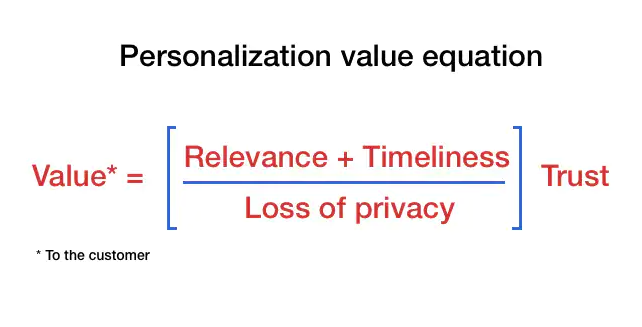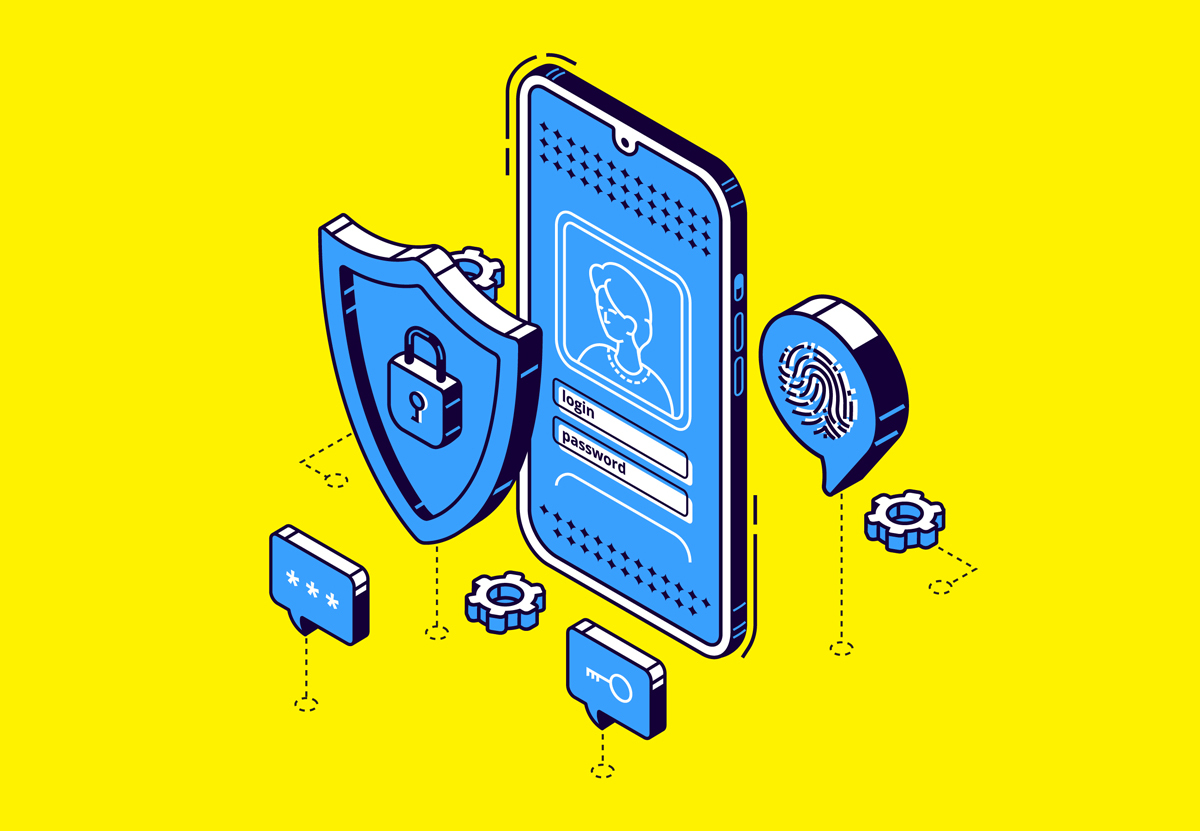In marketing, when it comes to personalizing content for consumers, there’s a thin line between being relevant and appearing creepy.
A user might see an ad that feels like it knows just a little too much about them; feel uneasy about how that information was discovered; or not trust the company using that information to market so specifically to them.
But here’s the thing: consumers want personalization. We’re more aware now of how much data we, as consumers and internet users, offer up by existing in digital spaces. We understand that the data collected is used to serve us ads and recommend products, services and content that we are likely to be interested in.
Put simply, for all the information we surrender, we expect some degree of personalization. And we are satisfied when personalization is appropriate and helpful, but it’s a big turn-off when personalization feels excessive, invasive or incorrect.
The numbers support this notion: an Accenture report found that 66% of consumers want companies to earn their trust by being transparent about how their information is collected and used, and 47% of consumers expect specialized treatment for being a good customer.
There’s a cost to not using personalization, but there’s also a cost to doing it wrong.
The Benefits of Great Personalization
Get data personalization right, and you’ll be rewarded with more efficient marketing efforts and a significant increase in growth rates and digital sales.
Personalization improves key metrics that go on to have a significant impact on revenue. For example, Marketo, a software company that specializes in personalization, reported that after including personalized calls to action on a hotel chain’s website, “visitors spent an average of 217% more time on the hotel’s website than before and viewed nearly 300% more pages per visit.”
To create personalized content that your users want to engage, it has to add value to the customer experience.
But how do you maximize the perceived value of your personalization so that the end customer accepts it, and how do you know when the personalization is too much?
Quantifying Perceived Value of Data Personalization
McKinsey has a useful and simple formula to quantify the value of personalization to a customer, expressed as:

To use it, you’ll need to answer a few questions:
- How relevant is the ad to their needs?
- How good is the timing and context in which the ad is served?
- How much data have they sacrificed to be served a personalized ad (and was it willingly)?
- How much do they trust the brand that is sending them such personalized marketing?
When Personalized Marketing Goes Right
Loyalty Apps and Personalization
Loyalty apps are an opt-in approach whereby customers are rewarded for providing increased data about themselves and their consumer behaviors with additional (and personalized) perks, such as drinks or experiences.
Think of the Starbucks rewards app, where you earn points at every visit. The points mean something to you because they add up, but you’re also letting Starbucks know where and when you enjoy your coffee and how you like it made – maybe even information like your birthday.
In turn, Starbucks can build a robust profile of you and prompt you to return and spend more with in-app deals. They may even use phone location tracking (or Bluetooth beacons) to know when you’re in proximity to a Starbucks location and entice you with a reward for coming in.
User Actions, Funnels and Retargeting
By segmenting your website users based on actions they have or haven’t taken, or by using a robust CRM, you can build lists of customers or potential customers at different stages of the purchasing cycle. You can then target those subsets with explicit messaging.
Being able to segment your audiences like this allows you to create more thoughtfully crafted content designed just for them and where they are at in their journey, as well as separate your budgets and bids to market to them.
You can also further augment these lists by segmenting customers by demographics and serving them more relevant creative. For example, serving ads portraying young women to young women and serving ads portraying men using the same product to men.
Relevant Recommendations
There’s an art to making appropriate recommendations to a customer. Salespeople (in real life) have been doing this for millennia! It’s possible online, too, whether using items in an abandoned cart to recommend similar items in a follow-up email or letting someone know their size is back in stock.
There are ways to automate recommendations so that you can scale both the personalization and curation of your products, and you can focus on the copywriting and creative elements of your emails instead.
Pair good recommendations with the right messaging that meets your audience where they’re at, and you will do a better job selling more and more often.
Timing Your Follow-Up
When someone buys from you, don’t ask them to repeat their purchase straight away, but anticipate when they might need what you offer. Restaurants wait a few days and then ask if you’re hungry in the afternoon when you’re busy at work and don’t want to have to cook for yourself, then send relevant marketing messages.
Then ask yourself what kind of data you have access to that might offer you an advantage over your competitors. Do you know when a customer’s birthday is or when key dates in their calendar are?
Maybe you’re a cake decorating store, and you know that customer X ordered a cake for his wife this time last year for her birthday. You could automatically send a reminder to prompt him to buy again. Make it easy for him to choose your business over others by removing any resistance. He’ll be so grateful that he no longer has to worry about researching, planning or ordering!
When Data Personalization Goes Wrong
Irrelevant Recommendations
When a user buys a winter coat from an online store and the appreciation email after the purchase recommends more coats, they are promoting items that the customer has already filled the need for. The correct appreciation email would contain a selection of products that pair well with the already purchased coat, such as gloves, hats and scarves.
High Frequency of Retargeting Ads
When sending out a retargeting message, sometimes it’s best just to let it go. Cap the number of impressions individual users receive so they don’t get inundated and frustrated with seeing your ad. Decide when it’s time to let them leave your funnel and go back to acquiring new customers.
Loss of Privacy
There’s an often-told story in marketing about how Target used loyalty customers’ personalization to predict not just that customers were pregnant but which trimester they were in and when their due date was based on their purchasing habits. In one instance, they sent targeted communication (coupons for cribs, diapers and other baby-related products) to a teenage girl when her parents were not aware she was pregnant.
How to Master Data Personalization
You can easily scale data personalization, but it starts with collecting good data. So make sure you’re tracking website or app analytics effectively and taking advantage of forms.
It’s also critical to be aware of any regulations around the collection, storage and use of personal data, as expressed in regulations like the General Data Protection Regulation (GDPR) or the California Consumer Privacy Act (CCPA).
When you’re ready to market your product, make the content relevant to the customer and their needs; make sure the timing and contexts are appropriate; only use data willingly shared by the user and keep your brand’s reputation impeccable with good data protection practices.

